Although Summer nights can be short, at least it’s warmer! If you’re outside under a starry Summer sky (in the Northern Hemisphere), here are the constellations you can learn to identify.
Note: All the images below are screenshots I took from the free Stellarium software. I have been using it for years and encourage you to download it too!
0. The Summer Triangle
The Summer Triangle is as asterism rather than a constellation. That’s why I’m numbering it as zero. Nevertheless, knowing how to identify the Summer Triangle provides the foundation for navigating the Summer sky.
The three stars that make up the Summer Triangle (Vega, Deneb, and Altair) are among the brightest. You can even find them from urban areas as long as the sky is clear.
Vega is the leading star (Westernmost) of the three, and is also the brightest. Deneb follows Vega and is closer to the North. Altair comes last and is closer to the South, but is slightly brighter than Deneb.
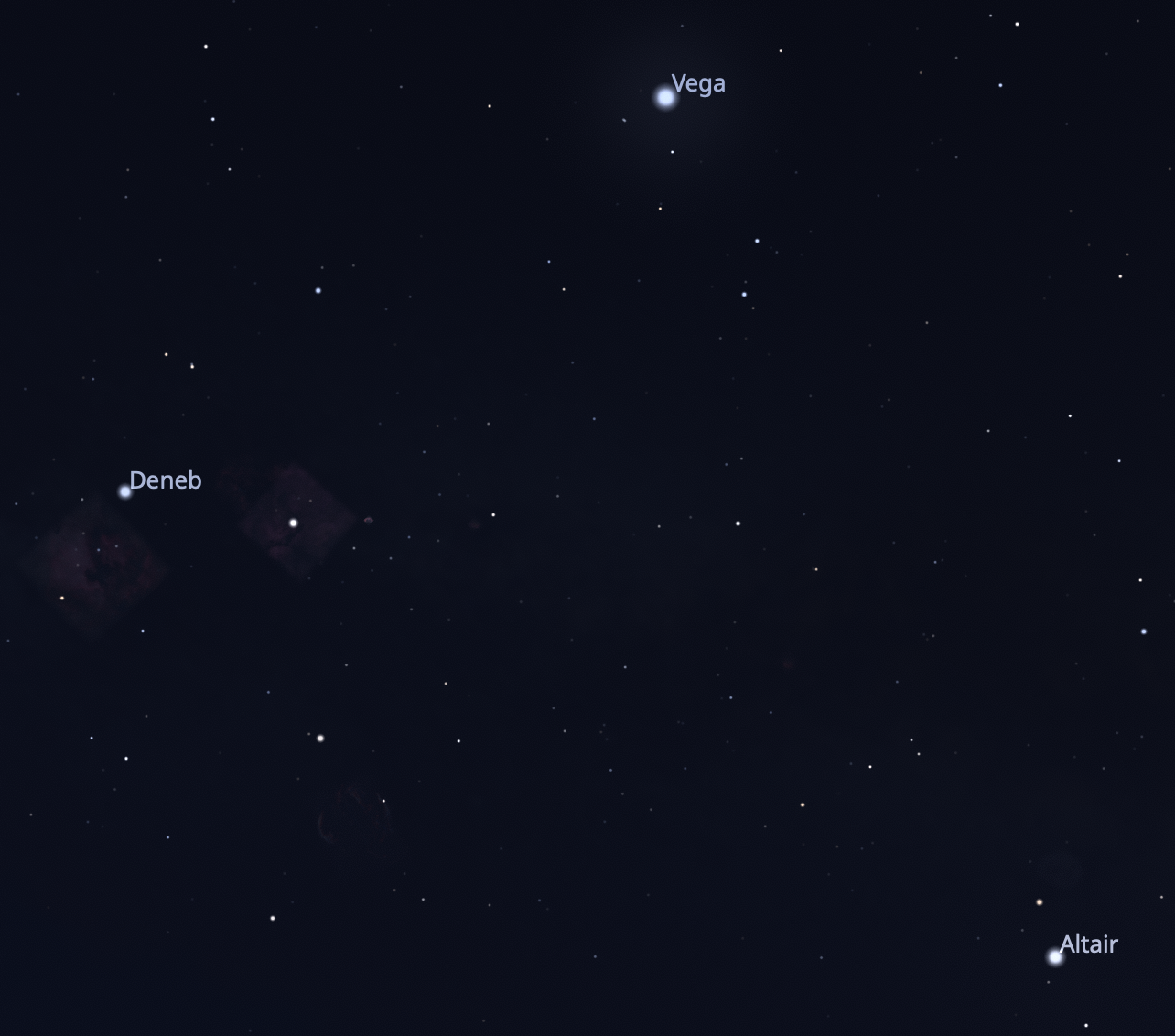
1. Cygnus
Out of the constellations associated with the Summer Triangle, Cygnus is usually the first one I spot.
Cygnus is Latin for Swan. It is also sometimes called “the Northern Cross” to contrast it with Crux, the (more official) Southern Cross.
I imagine the Swan’s head to be near Deneb. The star at what I would consider to be the Swan’s tail is called Albireo and is a beautiful double-star, orange and blue, that only be seen as two in telescopes.
The wing in between Deneb and Vega is closer to and points in the general direction of Polaris.
In the image you can also see the constellations Lyra and Vulpecula. Vulpecula is a minor constellation that we can ignore in this list, so next we will move on to Lyra.
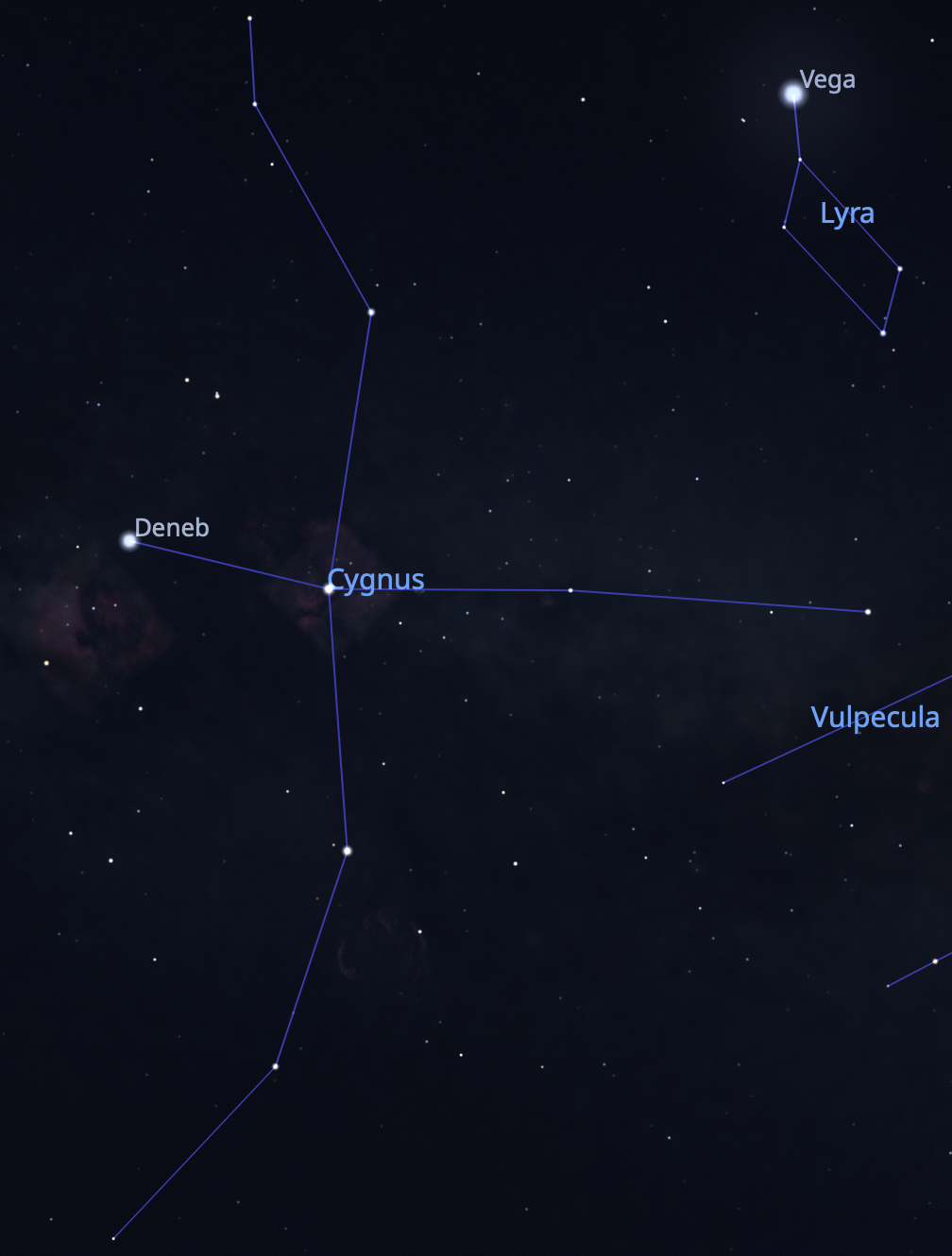
2. Lyra
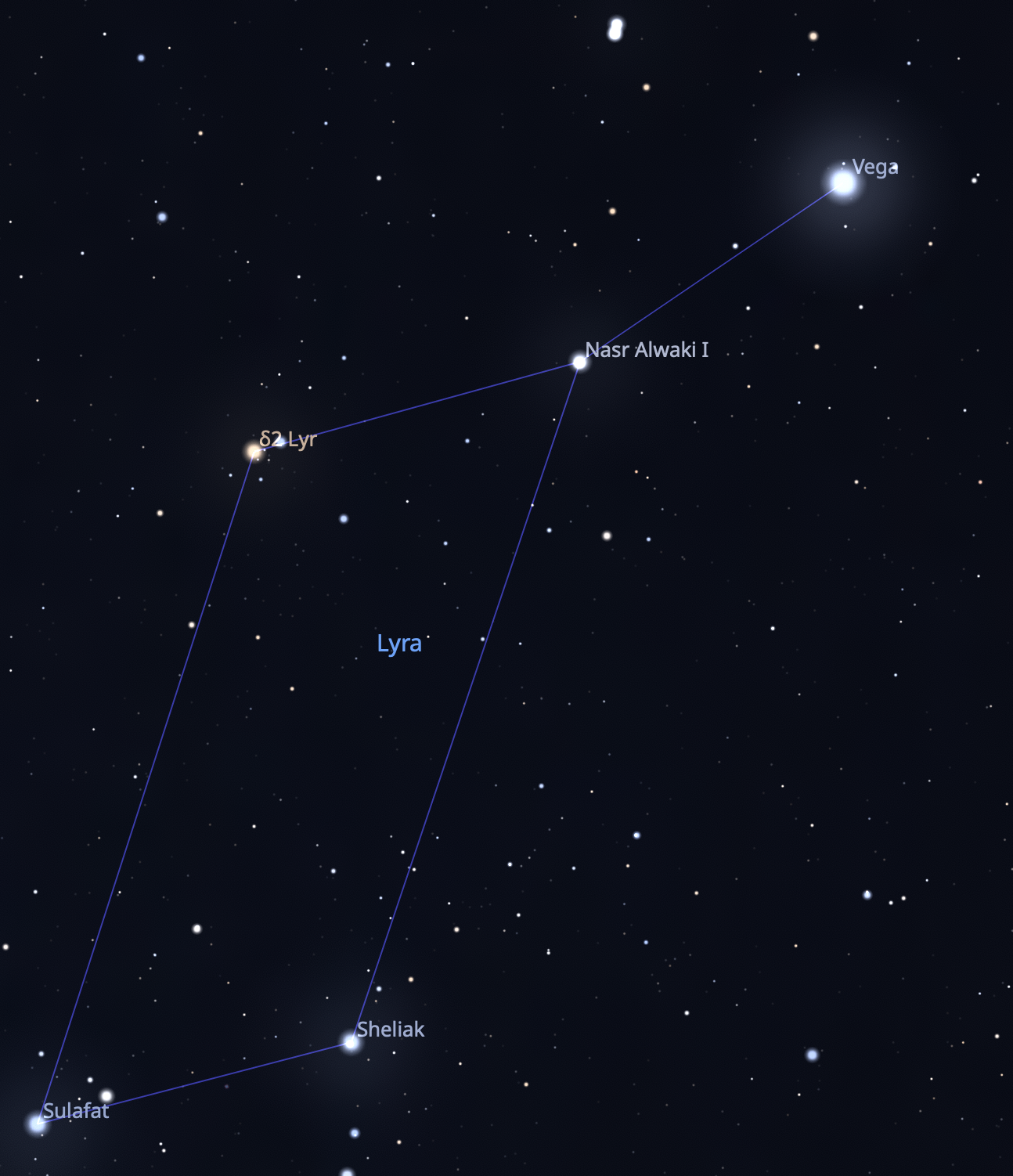
Lyra, the Lyre, is also easy to find once you have located the Summer Triangle. If you want, you can imagine King David playing the Lyre and singing the Psalms.
Vega, the brightest star in Lyra, was at one point chosen to be the standard star of magnitude 0.0, so that the magnitudes of other stars could be quantified in relation to Vega. A different way of measuring magnitude is now in use, though.
Neil deGrasse Tyson once joked that if there are life forms on a planet that orbits Vega, then they are the true Vegans.
For those who have telescopes, the Ring Nebula (Messier 57) lies about halfway between Sulafat and Sheliak, slightly below the line connecting them. It looks like a grey hazy patch through the telescope, but in photographs appears blue with an orange outline. Those colors are real; we just don’t see them through a telescope because our eyes at night adapt to be able to see motion better rather than color.
3. Aquila
Aquila is Latin for Eagle. I imagine the region around Altair to be the Eagle’s head. Altair comes from an Arabic word also associated with an eagle.
On dark nights I’m able to make out the wings and tail of Aquila as well and can more easily think of Aquila as majestic.

4. Hercules
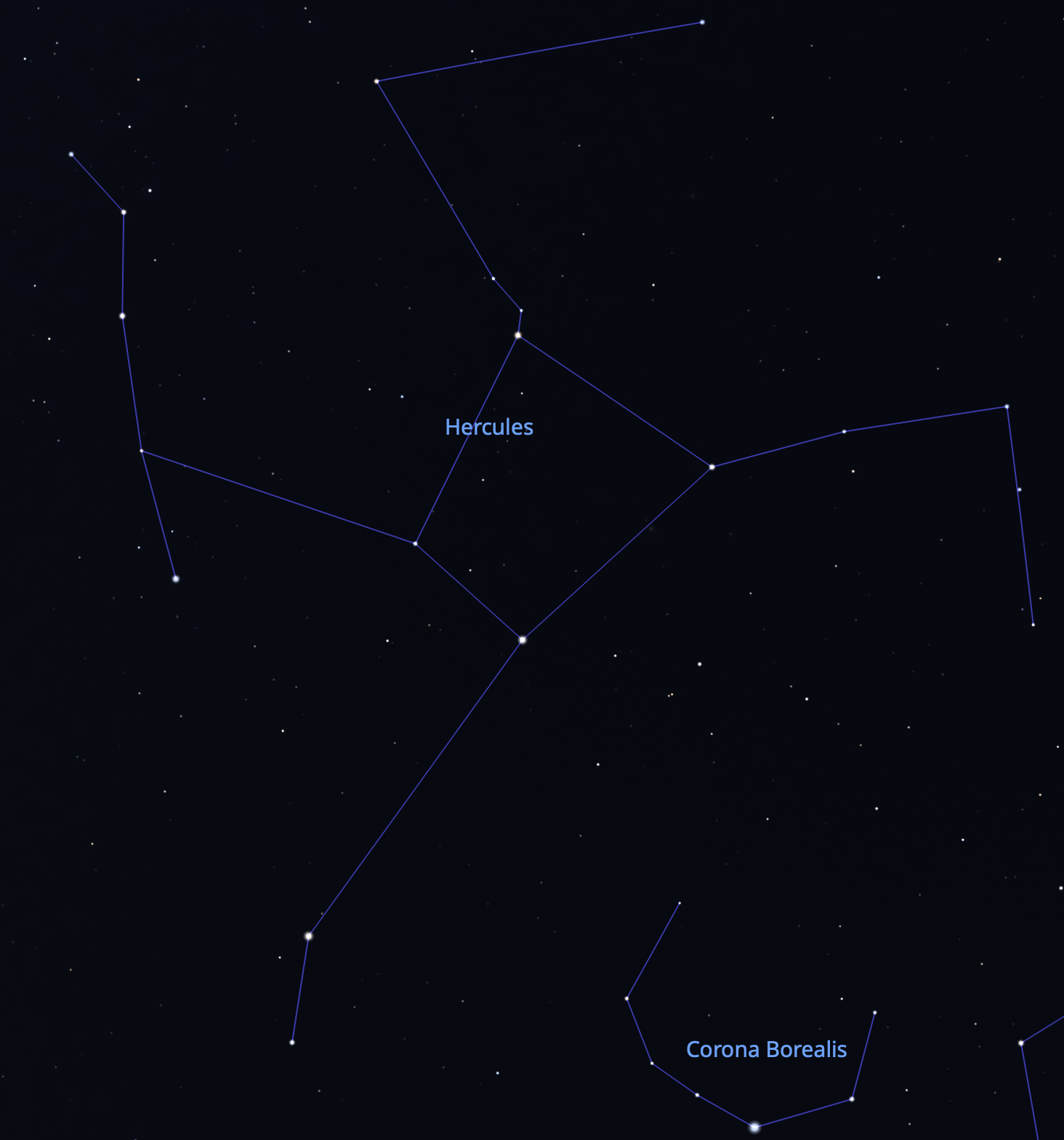
Hercules, the great Greek hero, leads in front of the Summer Triangle and is close to Vega.
I’ve trained myself to pick out the four stars that form the quadrilateral of his torso. From there I can then identify his limbs.
In the bottom corner you can also see Corona Borealis, the Northern Crown, which is fun to identify. I include it in my list of Northern Spring constellations, but it is also visible during much of the Summer.
For those who have telescopes or even binoculars, Messier 13, also called the Great Globular Cluster in Hercules, is a must-see. It is one of the easiest deep-sky objects to find. It is just outside the line that connects Hercules’s shoulder and hip on the side closest to Corona Borealis. It is about 2/3 of the way to the shoulder. If you’ve never seen a globular cluster before, it looks like someone spilled milk.
5. Ophiuchus
Ophiuchus comes from the Greek for serpent-bearer. The serpent is shown in the image as one separate constellation from Ophiuchus, but in other depictions the serpent’s head on the right (Serpens Caput) and tail. on the left (Serpens Cauda) are labeled as two separate constellations.
The triangular head of Serpens is helpful for finding Ophiuchus. Knowing that the middle of Ophiuchus is pretty empty of stars is another aid for confirming that it is in fact Ophiuchus.
Ophiuchus ought to be the 13th zodiac constellation because the ecliptic passes through it, but we humans like to associate the 12 months of the year with zodiac constellations, and Ophiuchus gets left out.
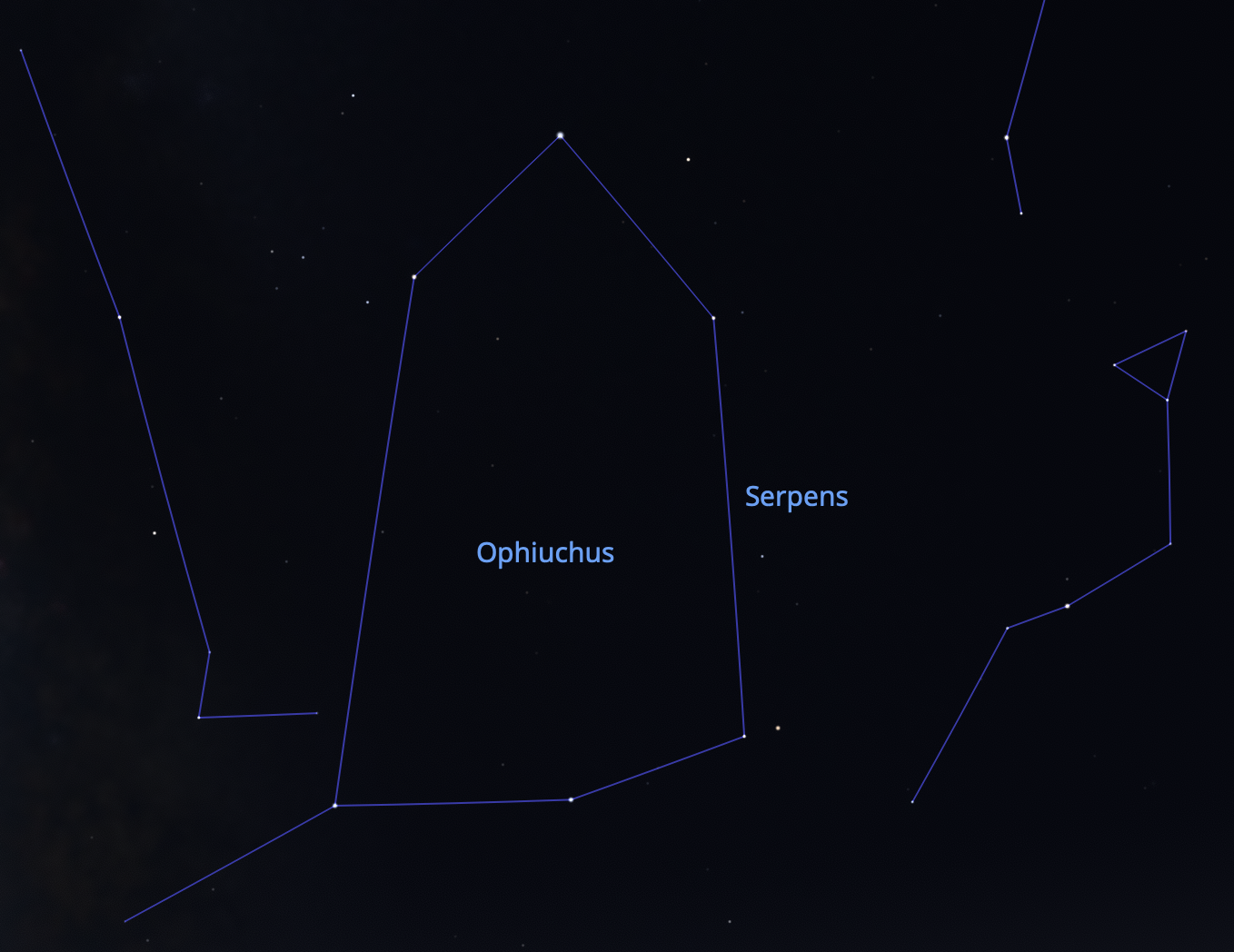
6. Scorpius
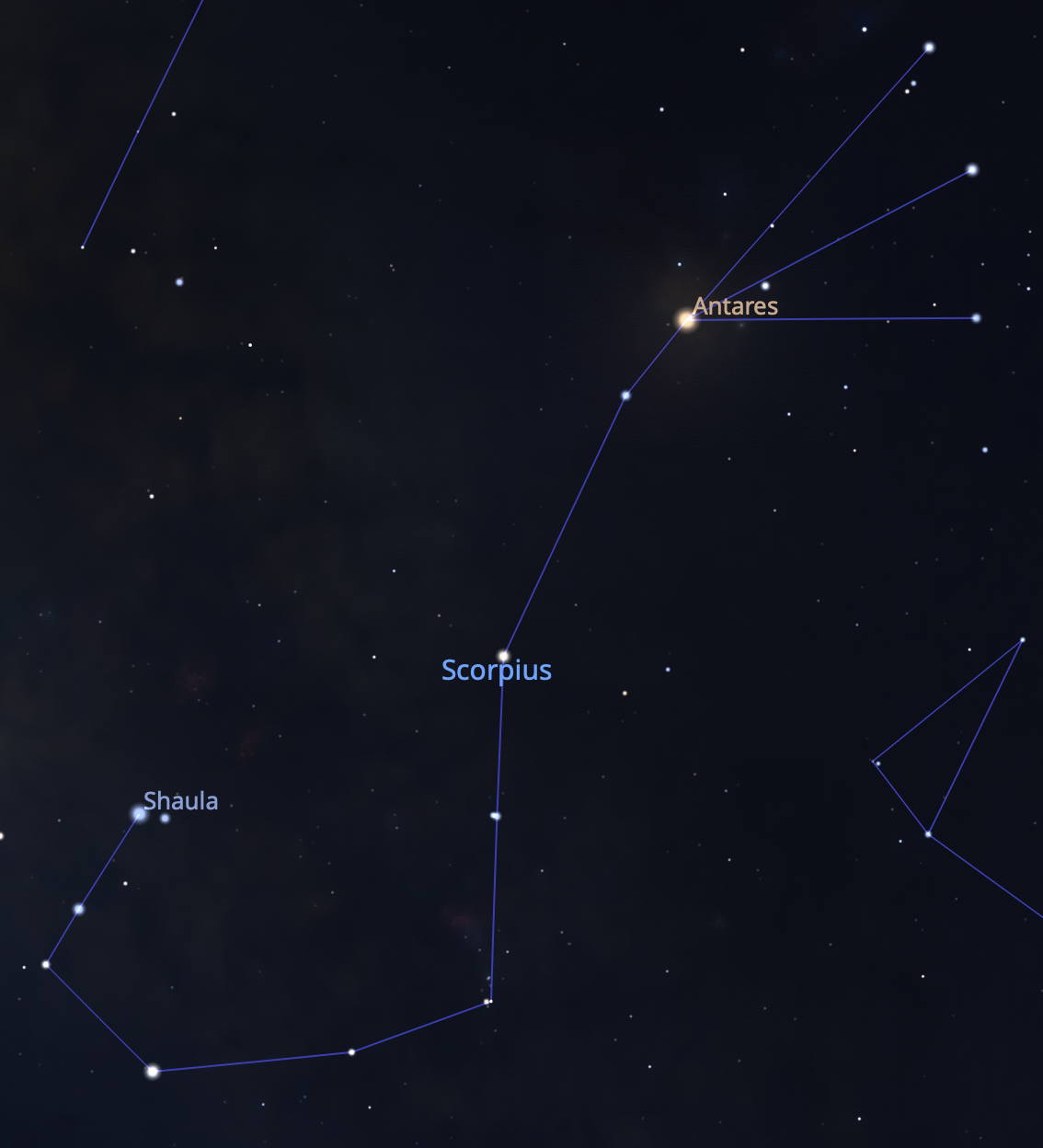
Scorpius remains quite close to the horizon for people like me in the Northern US. It is just ahead of Ophiuchus on the ecliptic but closer to the South.
The bright reddish star Antares and the hook made up by the stars looping around to Shaula make Scorpius relatively easy to find.
Antares is one of the stars that we are aware of that is closest to approaching its time of explosion as a supernova. Maybe it has already exploded; it takes light 550 years to go from Antares to Earth. If a supernova were to be detected in our lifetime, it would even be visible during the day, but we would not be in danger.
7. Sagittarius
Sagittarius is Latin for Archer, but the main part of Sagittarius is also referred to as the Teapot. I think a teapot is easier to visualize, with the handle on the left and the spout on the right. Sagittarius follows Scorpius on the ecliptic.
The arrow (Sagitta) shot by Sagittarius is a small constellation on the other side of Aquila and in the Summer Triangle, but it is minor enough that I will not include it in this list. Corona Australis, the Southern Crown, seen in this image, is also a minor constellation.
For those who have telescopes, Sagittarius is a rich region for deep-sky objects like clusters because the center of the Milky Way Galaxy is in Sagittarius. The supermassive black hole at that center is called Sagittarius A* (pronounced Sagittarius A-Star).

8. Capricornus
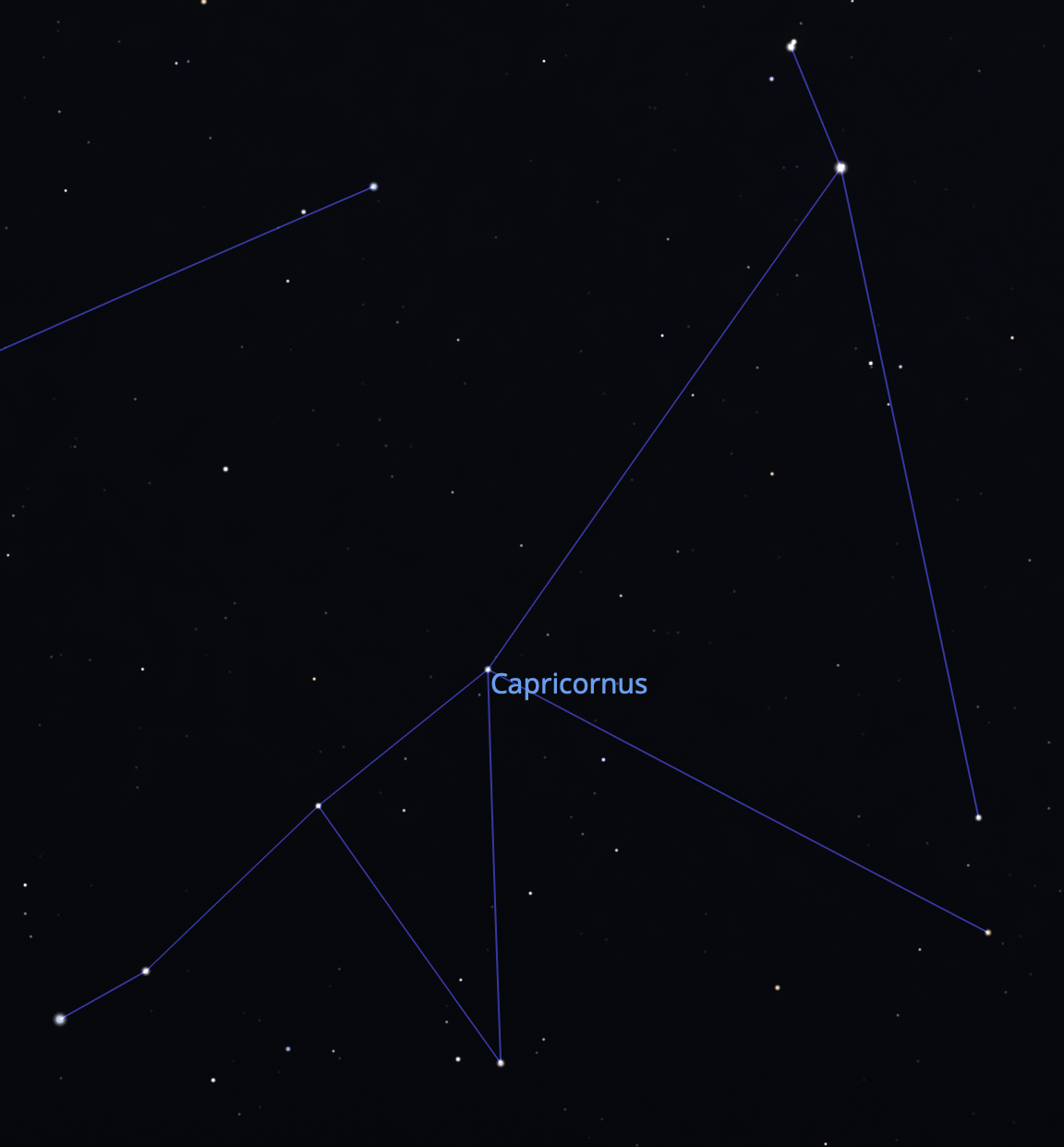
Capricornus, half-goat and half-fish, follows Sagittarius on the ecliptic. The horned goat-head is understood to consist of the bright stars in the top right of this image. The bottom right stars are the front hoofs. The bottom left stars make up the fish-tail.
Capricornus is the last one on my list of Northern Summer constellations and the most difficult constellation of this list to find. I only include it because it is one of the zodiac constellations, so the Sun, Moon, and planets pass through it. Because of that it can be useful to know. If you locate it, congratulations! You must be quite the Northern Summer astronomer!
I recently made lists of the constellations to learn in each season, as well as the circumpolar constellations. The Northern Summer list is the first one that I’m putting out there. I hope you all enjoy the Summer sky on clear nights in the months to come!

